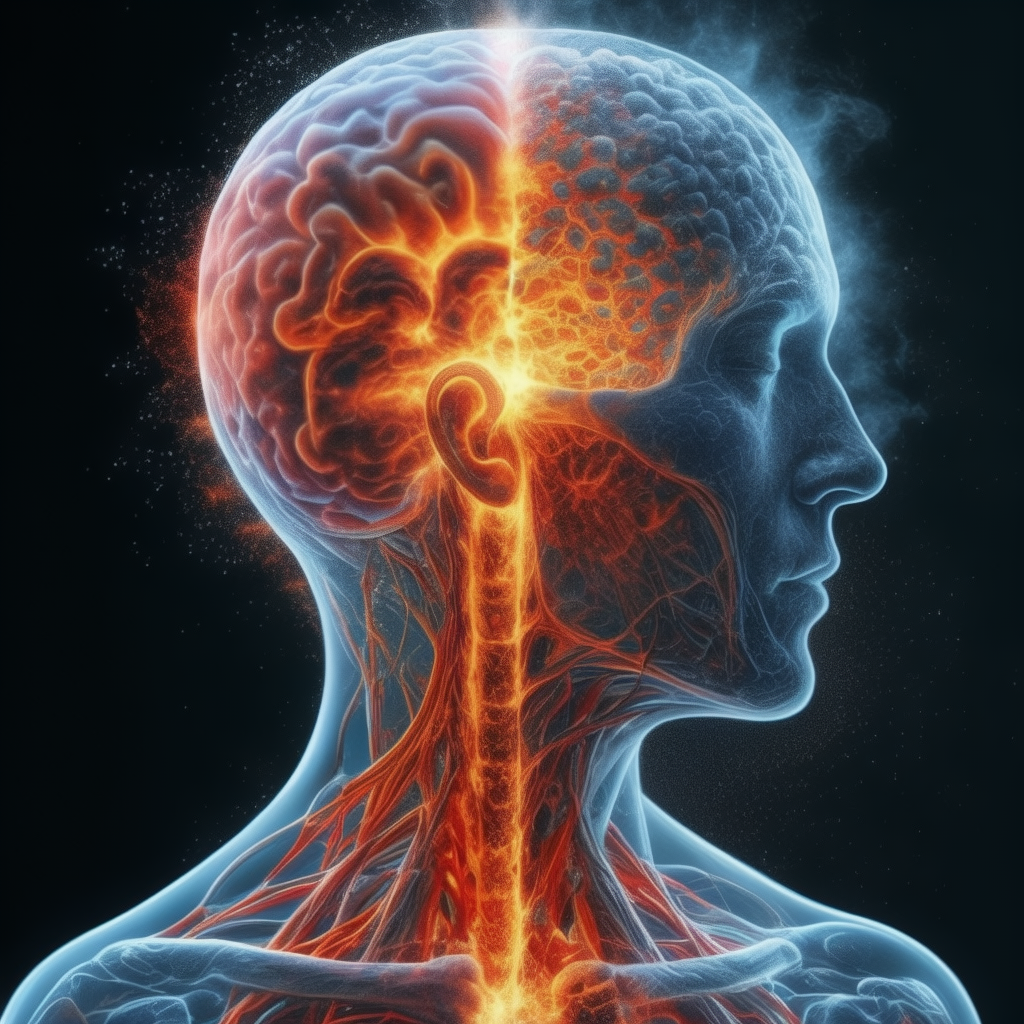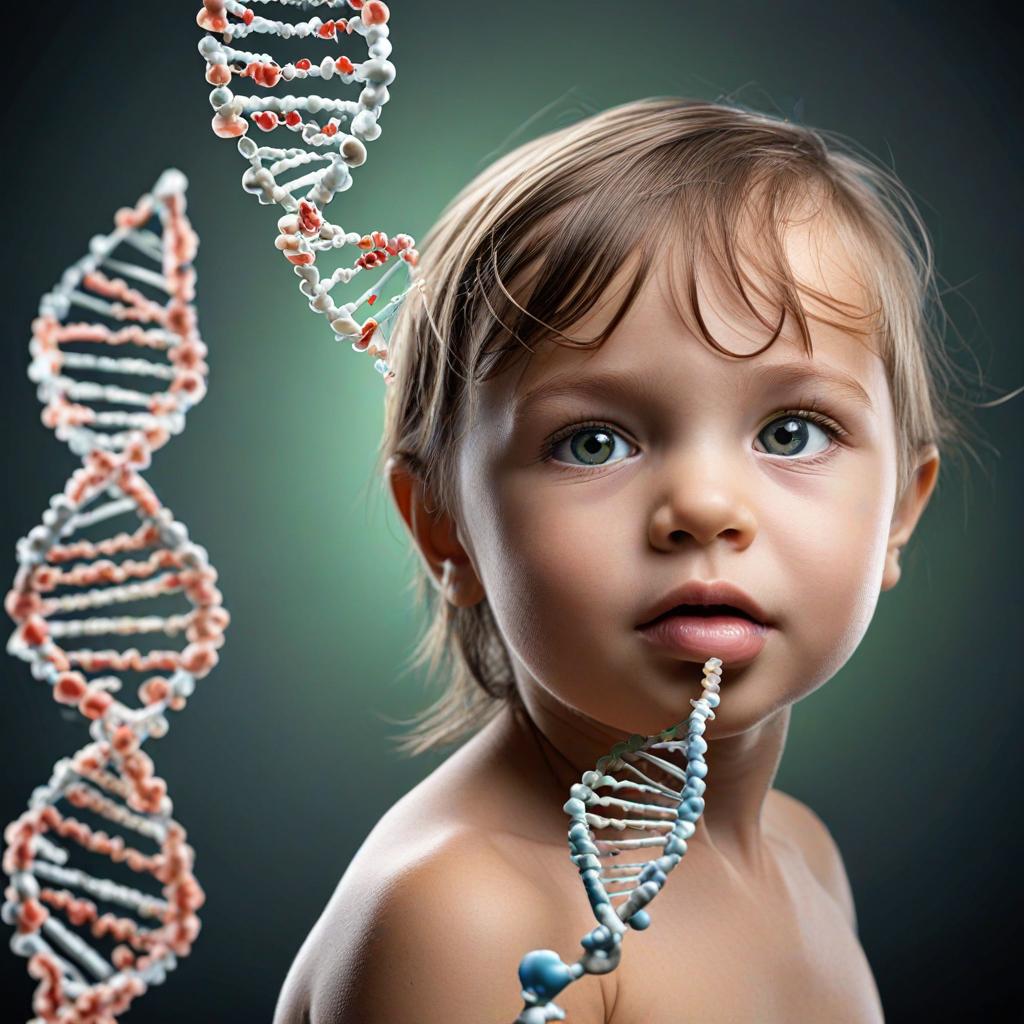Training the Brain for Effective Problem-Solving: A Comprehensive Guide
Problem-solving is an essential skill that plays a crucial role in every aspect of life, from personal challenges to professional endeavors. However, many of us struggle with approaching problems in a systematic and effective way. This often leads to frustration, inefficiency, and suboptimal solutions. In this blog post, we will explore how to train the brain for problem-solving by adopting the right mindset, understanding the problem thoroughly, breaking it down into manageable tasks, and leveraging appropriate tools and techniques.
The Problem-Solving Mindset
The first step in becoming an effective problem solver is cultivating the right mindset. This involves developing a constructive attitude towards challenges and viewing them as opportunities for growth rather than obstacles.
- Curiosity and Open-Mindedness: A curious and open-minded approach allows us to explore different perspectives and possibilities. It encourages us to ask questions, seek new information, and consider unconventional solutions.
- Patience and Perseverance: Problem-solving often requires time and effort. Developing patience and perseverance helps us stay committed to finding a solution, even when faced with setbacks or complexities.
- Resilience and Adaptability: The ability to bounce back from failures and adapt to changing circumstances is crucial. Resilience helps us learn from mistakes, while adaptability allows us to adjust our approach as needed.
Understanding the Problem: The Foundation of Problem-Solving
Before jumping to solutions, it’s essential to fully understand the problem at hand. This involves several key steps:
- Identifying the Problem: Clearly define what the problem is. This may involve separating symptoms from the root cause and distinguishing between different issues that may be interconnected.
- Gathering Information: Collect relevant data and information about the problem. This includes understanding the context, identifying stakeholders, and recognizing any constraints or limitations.
- Root Cause Analysis: Utilize techniques like the “5 Whys” or Fishbone Diagram to uncover the root causes of the problem. This helps prevent superficial solutions that only address symptoms.
- Understanding Variables and Factors: Identify the variables and factors that influence the problem. This could include internal factors (e.g., organizational processes, team dynamics) and external factors (e.g., market trends, technological advancements).
Breaking Down the Problem: The Power of Decomposition
Large, complex problems can be overwhelming. To tackle them effectively, it’s essential to break them down into smaller, more manageable tasks.
- Decomposition: Divide the problem into sub-problems or components. This makes it easier to focus on specific aspects of the problem and develop targeted solutions.
- Prioritization: Determine which tasks are most critical and prioritize them accordingly. This ensures that you address the most impactful issues first.
- Setting Goals and Milestones: Establish clear, achievable goals and milestones for each task. This helps track progress and maintain momentum.
Developing a Solution: The Step-by-Step Approach
Once the problem is understood and broken down, the next step is to develop a solution. This involves several stages:
- Brainstorming and Ideation: Generate a list of potential solutions. Encourage creative thinking and consider a wide range of possibilities.
- Evaluating Options: Assess the feasibility, pros, and cons of each solution. Consider factors like cost, time, resources, and potential impact.
- Selecting the Best Solution: Choose the solution that best addresses the root causes of the problem and aligns with your goals and constraints.
- Implementation Planning: Develop a detailed plan for implementing the chosen solution. This should include timelines, resources, responsibilities, and contingency plans.
- Execution and Monitoring: Execute the plan and monitor progress. Be prepared to make adjustments as needed based on feedback and results.
Common Pitfalls and How to Avoid Them
Even with the best intentions, problem-solving efforts can go awry. Here are some common pitfalls and strategies to avoid them:
- Jumping to Conclusions: Avoid rushing to a solution without fully understanding the problem. Take the time to analyze and diagnose the issue thoroughly.
- Overlooking Root Causes: Ensure that solutions address the root causes, not just the symptoms. Conduct a thorough root cause analysis.
- Ignoring the Big Picture: While breaking down the problem is essential, don’t lose sight of the overall context. Consider how different components of the problem are interconnected.
- Underestimating Resources: Accurately assess the resources needed to implement a solution. This includes time, budget, skills, and technology.
- Neglecting to Review and Reflect: After implementing a solution, review the results and reflect on the process. Identify lessons learned and areas for improvement.
Case Study: Building an App with Effective Problem-Solving
Let’s apply these principles to a practical scenario: building an app. This process often involves a range of challenges, from defining business logic and user workflows to selecting the right technology and tools.
- Understanding the Problem: Before starting development, it’s crucial to understand the app’s purpose, target audience, and core features. Conduct market research and gather user feedback to identify needs and pain points.
- Breaking Down the Problem: Divide the project into stages, such as planning, design, development, testing, and launch. Within each stage, identify specific tasks, such as creating wireframes, coding features, and conducting user testing.
- Developing a Solution: Brainstorm potential features and functionalities. Evaluate them based on user needs, technical feasibility, and business goals. Select a set of core features for the initial release, with a roadmap for future updates.
- Implementation: Create a detailed project plan, assign tasks to team members, and set deadlines. Use agile methodologies to iterate on the app, incorporating feedback and making improvements.
- Monitoring and Reflection: After the app is launched, monitor user engagement and gather feedback. Reflect on what worked well and what could be improved for future projects.
Expanding the Horizons of Problem-Solving: Insights from Neuroscience, Medicine, Evolution, Habit Formation, and Environment
Neuroscientific Insights: The Brain’s Wiring and Plasticity
- Neural Networks and Pattern Recognition:
- The human brain consists of interconnected neurons that form complex networks. These neural networks are responsible for recognizing patterns and making associations. Problem-solving often involves identifying patterns within a problem and drawing upon past experiences stored in the brain. For instance, expertise in a particular field allows for quicker recognition of patterns and solutions, known as “chunking.”
- Neuroplasticity and Learning:
- Neuroplasticity refers to the brain’s ability to reorganize itself by forming new neural connections. This plasticity is crucial for learning and adapting to new situations. Continuous learning and practice in problem-solving enhance these neural pathways, making it easier to tackle similar problems in the future. Techniques like deliberate practice, where one intentionally works on weak areas, can strengthen these pathways.
- The Role of the Prefrontal Cortex:
- The prefrontal cortex (PFC) is the brain region responsible for executive functions, such as decision-making, planning, and problem-solving. It plays a key role in setting goals, evaluating options, and inhibiting impulsive responses. Strengthening the PFC through activities that require critical thinking and self-control can improve problem-solving abilities.
Medical Perspective: Cognitive Health and Problem-Solving
- Impact of Cognitive Health on Problem-Solving:
- Cognitive health significantly influences one’s ability to solve problems. Conditions like dementia, attention deficit hyperactivity disorder (ADHD), and anxiety disorders can impair cognitive functions, including attention, memory, and decision-making. Maintaining cognitive health through a balanced diet, regular exercise, adequate sleep, and mental stimulation is essential for effective problem-solving.
- Neurotransmitters and Cognitive Function:
- Neurotransmitters, such as dopamine and serotonin, play crucial roles in regulating mood, motivation, and cognitive function. Dopamine, in particular, is associated with reward and motivation pathways, which are vital for perseverance in problem-solving. Imbalances in these neurotransmitters can affect one’s ability to stay focused and motivated.
- Cognitive Rehabilitation and Therapy:
- Cognitive rehabilitation therapies aim to improve cognitive function in individuals with impairments. Techniques like cognitive-behavioral therapy (CBT) help individuals develop coping strategies and cognitive skills. Such therapies can be particularly useful for enhancing problem-solving abilities in individuals with cognitive deficits.
Evolutionary Perspective: The Adaptive Nature of Problem-Solving
- Evolutionary Basis of Problem-Solving:
- From an evolutionary perspective, problem-solving skills have been essential for survival. Early humans had to solve complex problems related to finding food, shelter, and avoiding predators. This need for problem-solving led to the development of advanced cognitive abilities, such as foresight, planning, and abstract thinking.
- Adaptation and Innovation:
- The ability to innovate and adapt to changing environments is a hallmark of human evolution. This adaptability is reflected in the brain’s capacity to think creatively and find novel solutions to problems. For example, the development of tools and technology throughout history demonstrates humans’ ability to solve practical problems innovatively.
- Social Learning and Collaboration:
- Humans are inherently social beings, and problem-solving often occurs in collaborative settings. The evolution of language and social structures has enabled humans to share knowledge and learn from each other’s experiences. This collective problem-solving capability has been a significant factor in human progress and development.
Habit Formation and Problem-Solving: The Role of Routines and Mindset
- Habits and Automaticity:
- Habit formation plays a critical role in problem-solving. Habits are behaviors that become automatic through repetition. Developing good problem-solving habits, such as systematic analysis and critical thinking, can make these processes more efficient. For example, routinely using a checklist or framework can help ensure that all aspects of a problem are considered.
- Mindset and Perseverance:
- A growth mindset, the belief that abilities can be developed through effort and learning, fosters perseverance and resilience in problem-solving. Individuals with a growth mindset are more likely to embrace challenges, persist through difficulties, and learn from failures. In contrast, a fixed mindset may lead to avoiding challenges and giving up easily.
- The Role of Self-Regulation:
- Self-regulation involves managing one’s emotions, thoughts, and behaviors. Effective self-regulation helps in maintaining focus, managing stress, and avoiding impulsive decisions. Techniques like mindfulness meditation and cognitive restructuring can enhance self-regulation skills, aiding in better problem-solving.
Environmental Influences: Context and Problem-Solving
- Cultural and Societal Influences:
- The environment, including cultural and societal norms, significantly influences problem-solving approaches. Different cultures may prioritize various values and ways of thinking, affecting how individuals approach and solve problems. For instance, some cultures emphasize collectivism and collaboration, while others prioritize individualism and competition.
- Physical Environment and Cognitive Performance:
- The physical environment, such as workspace design, noise levels, and lighting, can impact cognitive performance. A well-organized and comfortable workspace can enhance focus and productivity, while a cluttered or noisy environment may lead to distractions and decreased problem-solving efficiency.
- Exposure to Diverse Perspectives:
- Exposure to diverse perspectives and experiences broadens one’s thinking and enhances problem-solving skills. Engaging with people from different backgrounds, reading widely, and exploring various fields of knowledge can provide new insights and inspire innovative solutions.
Worldwide Evidence and Practices: Global Approaches to Problem-Solving
- Education Systems and Problem-Solving Skills:
- Education systems worldwide place varying emphasis on problem-solving skills. Some focus heavily on rote memorization and standardized testing, while others prioritize critical thinking, creativity, and real-world problem-solving. For example, Finland’s education system is known for encouraging creative problem-solving and student autonomy.
- Cross-Cultural Problem-Solving Techniques:
- Different cultures employ unique problem-solving techniques based on historical and contextual factors. For instance, Eastern cultures often emphasize holistic thinking and the importance of context, while Western cultures may focus on analytical thinking and individual agency. Understanding and integrating these diverse approaches can enhance one’s problem-solving toolkit.
- Global Challenges and Collaborative Solutions:
- Global challenges, such as climate change, pandemics, and poverty, require collaborative problem-solving on an international scale. These challenges highlight the importance of cross-disciplinary and cross-cultural collaboration, as well as the need for innovative and sustainable solutions.
Effective problem-solving is a multifaceted skill influenced by a wide range of factors, including neuroscience, cognitive health, evolution, habit formation, environment, and cultural context. By understanding and integrating these perspectives, individuals can develop a comprehensive approach to tackling challenges, whether personal, professional, or global. The key lies in cultivating the right mindset, continuously learning and adapting, and leveraging diverse experiences and knowledge. Through deliberate practice and mindful reflection, we can enhance our problem-solving abilities and navigate the complexities of an ever-changing world.
The Art and Science of Breaking Down Problems: A Deep Dive into Cognitive Processes, Quantum Physics, and AIML Principles
Breaking down complex problems into manageable tasks is a critical skill in problem-solving, yet many people struggle with it. This difficulty can stem from cognitive, neurological, emotional, and even conceptual factors. In this section, we will explore why some people excel at this skill while others falter, delve into the underlying neurological and cognitive mechanisms, and examine how principles from quantum physics and artificial intelligence/machine learning (AIML) can aid in the problem-solving process.
The Challenge of Breaking Down Problems: Cognitive and Neurological Perspectives
- Cognitive Load and Working Memory:
- One primary reason people struggle with breaking down problems is the limitations of working memory, which is the system responsible for temporarily holding and manipulating information. When faced with complex problems, the cognitive load can overwhelm working memory, making it difficult to retain and process all relevant details. This often leads to confusion and an inability to identify and prioritize sub-tasks.
- Executive Function Deficits:
- Executive functions are higher-level cognitive processes that include planning, decision-making, and task management. These functions are primarily governed by the prefrontal cortex. Individuals with deficits in executive functions, whether due to neurodevelopmental disorders like ADHD or other neurological conditions, may find it challenging to organize and break down tasks effectively. They may struggle with setting goals, sequencing steps, and maintaining focus on the task at hand.
- Emotional Regulation and Impulse Control:
- Emotional responses, such as fear, frustration, and anxiety, can significantly impact problem-solving abilities. When encountering a challenging problem, individuals may experience emotional dysregulation, leading to impulsive reactions or avoidance behaviors. This emotional response can prevent a calm and systematic analysis of the problem, making it difficult to break it down into manageable parts.
- Neurological Basis of Problem-Solving Difficulties:
- At the neurological level, variations in brain structure and function can influence problem-solving abilities. For example, differences in the connectivity and activation of the prefrontal cortex, amygdala, and hippocampus can affect how individuals perceive and respond to challenges. Neurotransmitter imbalances, particularly involving dopamine and serotonin, can also impact motivation, reward processing, and emotional regulation.
Quantum Physics Principles and Problem-Solving
- Superposition and Multiple Perspectives:
- Quantum physics introduces the concept of superposition, where particles can exist in multiple states simultaneously until observed. This principle can metaphorically apply to problem-solving by encouraging the consideration of multiple perspectives and possibilities. Instead of focusing on a single solution path, individuals can explore various potential outcomes and approaches, leading to more innovative and comprehensive solutions.
- Quantum Entanglement and Interconnectedness:
- Quantum entanglement describes a phenomenon where particles become linked and instantaneously affect each other, regardless of distance. In problem-solving, this can be analogous to recognizing the interconnectedness of different factors and variables. Acknowledging these connections can help identify how changes in one area may impact others, leading to a more holistic understanding of the problem.
- Uncertainty Principle and Flexibility:
- The Heisenberg Uncertainty Principle states that certain pairs of properties cannot be precisely measured simultaneously. In problem-solving, this principle suggests the importance of flexibility and adaptability. Rather than seeking absolute certainty, individuals should remain open to adjusting their approach as new information becomes available, allowing for more agile and responsive problem-solving strategies.
AIML Principles and Problem-Solving
- Algorithmic Thinking and Step-by-Step Approach:
- AIML systems, such as algorithms and neural networks, rely on breaking down tasks into step-by-step instructions or layers of processing. This approach can be mirrored in human problem-solving by using algorithmic thinking: defining clear steps, decision points, and contingencies. For example, using flowcharts or decision trees can help visualize the sequence of actions and decisions required to solve a problem.
- Pattern Recognition and Data-Driven Insights:
- Machine learning models excel at recognizing patterns in data. Similarly, human problem-solving can benefit from identifying patterns and trends in the information available. By analyzing past experiences, data, and outcomes, individuals can make informed predictions and decisions. This data-driven approach helps reduce cognitive biases and ensures a more objective evaluation of options.
- Iterative Learning and Feedback Loops:
- AIML systems often use iterative processes and feedback loops to refine their models. In problem-solving, adopting an iterative approach—where solutions are continuously tested, evaluated, and refined—can lead to better outcomes. This process involves setting hypotheses, experimenting, gathering feedback, and making adjustments, much like a machine learning model’s training cycle.
Addressing Cognitive Deficits: Strategies for Improvement
- Cognitive Training and Skill Development:
- Cognitive training programs can help improve executive functions, working memory, and other cognitive skills essential for problem-solving. Techniques like brain training exercises, puzzles, and games can enhance cognitive flexibility, attention, and memory.
- Mindfulness and Emotional Regulation:
- Mindfulness practices, such as meditation and deep breathing exercises, can help manage emotional responses and improve impulse control. By promoting a calm and focused state of mind, mindfulness can reduce the impact of negative emotions on problem-solving abilities.
- Behavioral Therapy and Coaching:
- Behavioral therapies, including cognitive-behavioral therapy (CBT), can address maladaptive thought patterns and behaviors. Coaching and mentoring can also provide guidance and support, helping individuals develop structured problem-solving techniques and strategies.
- Leveraging Technology and Tools:
- Technology, such as digital planners, task management apps, and collaborative platforms, can assist in organizing and breaking down tasks. These tools can help individuals set goals, track progress, and prioritize actions, making the problem-solving process more manageable and systematic.
Genetic and Biological Considerations
- Genetic Factors and Cognitive Abilities:
- Genetics can play a role in determining cognitive abilities, including problem-solving skills. Variations in genes related to neurotransmitter systems, brain structure, and neural connectivity can influence cognitive functions. Understanding one’s genetic predispositions can help tailor strategies for cognitive enhancement and problem-solving.
- Neuroplasticity and Lifelong Learning:
- Despite genetic influences, the brain’s neuroplasticity allows for continuous learning and adaptation. Engaging in intellectually stimulating activities, pursuing new hobbies, and staying curious can help build cognitive reserves and improve problem-solving capabilities over time.
Conclusion
Breaking down problems into manageable tasks is a complex skill influenced by various cognitive, neurological, emotional, and conceptual factors. By understanding the underlying mechanisms and adopting strategies from fields like quantum physics and AIML, individuals can enhance their problem-solving abilities. Addressing cognitive deficits through targeted training, mindfulness, behavioral therapy, and the use of technology can further support this process. Ultimately, cultivating a flexible, iterative, and data-driven approach to problem-solving can lead to more effective and innovative solutions.
Training the brain for effective problem-solving requires a combination of mindset, skills, and techniques. By adopting a systematic approach—understanding the problem, breaking it down, developing a solution, and avoiding common pitfalls—we can tackle challenges more efficiently and effectively. Whether building an app, solving a business problem, or addressing personal challenges, these principles provide a solid foundation for success.







